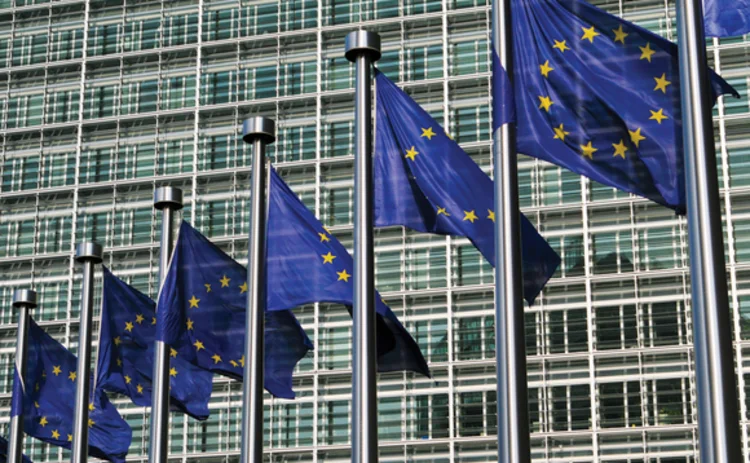Three Years On, Europe Agrees Mifid II

The sweeping package of rules covers a range of market activities, including the electronic trading of derivatives, restrictions on algorithmic and high-frequency trading, provisions for the disclosure of trade data, and a cap on dark-pool activity. EU politicians struck the deal in trilogue, during a meeting that was regarded in some quarters as a last-ditch effort to force an agreement before elections to the European Parliament later this year, which would have further delayed a process that has already taken over three years since the European Commission officially launched the review with a consultation period in 2010.
"The Mifid II reform means that organized trading of financial instruments must shift to multilateral and well-regulated trading platforms," says Michel Barnier, commissioner for internal market and services at the European Commission. "Strict transparency rules will ensure that dark trading of shares and other equity instruments which undermine efficient and fair price formation will no longer be allowed. Although I regret that the Commission's proposed ambitious transparency regime for non-equity instruments, such as bonds and derivatives, has not been fully achieved, Mifid II represents an important step in the right direction towards greater transparency in this area."
Derivatives and Clearing
Under the terms of the agreement, Europe will oversee the establishment of Organized Trading Facilities (OTFs). This new form of multilateral trading venue is designed to facilitate the execution of certain instruments, such as credit-default swaps, on an electronic basis, and is seen as broadly analogous to Swap Execution Facilities (SEFs) in the US. All trading systems in Europe will have to operate as regulated markets, multilateral trading facilities, or OTFs.
In terms of clearing, the Mifid II agreement also puts in place provisions for non-discriminatory access to central counterparty clearing houses (CCPs) and trading venues. This is aimed at broadening competition in the market by, for example, allowing trades executed on one exchange to be cleared using a CCP owned by a rival.
"This is one of the most important legislative reforms of Europe's capital markets with the potential to enhance transparency, improve price formation, and increase fairness and confidence across a range of markets," says Simon Lewis, chief executive of the Association for Financial Markets in Europe (Afme), an industry trade group, in a statement regarding the Mifid II agreement. Afme went on to warn, however, that further work was needed on the CCP stipulations.
Mifid II will also ensure that legislation keeps pace with technological developments. The dramatic increase in the speed and volumes of order flows can pose systemic risks. - Michel Barnier, EC.
Algorithmic Trading
One of the more contentious aspects of Mifid II has been the uncertainty around algorithmic trading. Mixed messages have come from Brussels at various points of the dialogue, but with the Mifid II agreement, EU lawmakers are seeking to definitively regulate the operation of algorithmic and high-frequency strategies in European markets.
Algorithmic traders will now be forced to register with the appropriate authorities and become regulated entities, and Mifid II will mandate the provision of liquidity when pursuing market-making strategies. A key plank of criticism for algorithmic traders has been the withdrawal of liquidity during times of market stress, and the move was widely expected.
More surprising, however, was the requirement for algorithms themselves to be authorized by regulators. While full testing by regulatory agencies─an idea initially mooted several years ago, but dismissed as unworkable─isn't in the text, algorithms must be tested on venues, and then receive authorization from a competent authority. Records of all orders and cancellations must be stored, to be made available to regulators on request.
"Mifid II will also ensure that legislation keeps pace with technological developments," says the European Commission's Barnier. "The dramatic increase in the speed and volumes of order flows can pose systemic risks. The new rules ensure safe and orderly markets and financial stability through the introduction of trading controls, an appropriate liquidity provision obligation for high-frequency traders pursuing market-making strategies and by regulating the provision of direct electronic market access."
Data and Third Countries
Provisions for data are included in the Mifid II text, which obligates trading venues to make pre- and post-trade data available on a reasonable commercial basis, and also mandates the establishment of the European consolidated tape.
Third-country firms, or those that aren't resident in the European Union through their headquarters, but have a presence in EU nations, are able to utilize the European ‘passport' and provide services throughout the bloc, as long as their home nation's regulatory system is judged to be equivalent to the EU.
The agreement will be passed to the European Securities and Markets Authority (Esma), in order for technical work to commence ahead of implementation. While the rules are expected to enter into law later this year, general compliance is not expected until 2016.
Following the announcement, reaction was mixed on social media channels. Some praised the final decision on Mifid II, while others stressed that work still remained.
Only users who have a paid subscription or are part of a corporate subscription are able to print or copy content.
To access these options, along with all other subscription benefits, please contact info@waterstechnology.com or view our subscription options here: http://subscriptions.waterstechnology.com/subscribe
You are currently unable to print this content. Please contact info@waterstechnology.com to find out more.
You are currently unable to copy this content. Please contact info@waterstechnology.com to find out more.
Copyright Infopro Digital Limited. All rights reserved.
You may share this content using our article tools. Printing this content is for the sole use of the Authorised User (named subscriber), as outlined in our terms and conditions - https://www.infopro-insight.com/terms-conditions/insight-subscriptions/
If you would like to purchase additional rights please email info@waterstechnology.com
Copyright Infopro Digital Limited. All rights reserved.
You may share this content using our article tools. Copying this content is for the sole use of the Authorised User (named subscriber), as outlined in our terms and conditions - https://www.infopro-insight.com/terms-conditions/insight-subscriptions/
If you would like to purchase additional rights please email info@waterstechnology.com
More on Regulation
Bank-led consortium takes aim at position reporting
Five banks, including Barclays, BNP Paribas, Goldman Sachs and HSBC, have joined forces to mitigate interpretation and implementation errors in position reporting disclosures.
Verafin launches genAI copilot for fincrime investigators
Features include document summarization and improved research tools.
Waters Wrap: Open source and storm clouds on the horizon
Regulators and politicians in America and Europe are increasingly concerned about AI—and, by extension, open-source development. Anthony says there are real reasons for concern.
DSB says industry is ready to meet UPI mandate ahead of deadline
The Unique Product Identifier will be required for certain OTC derivatives in the EU at the end of April, following US adoption in January.
‘Very careful thought’: T+1 will introduce costs, complexities for ETF traders
When the US moves to T+1 at the end of May 2024, firms trading ETFs will need to automate their workflows as much as possible to avoid "settlement misalignment" and additional costs.
Court case probes open-source licenses as movement stands at crossroads
The Software Freedom Conservancy’s lawsuit against TV-maker Vizio begins trial in California, raising questions about open-source licenses and the risks posed by adhering to them.
Waters Wavelength Podcast: Countdown to T+1
DTCC’s Val Wotton joins the podcast this week to discuss the impending move to T+1 in the US.
Consolidated tape hopefuls gear up for uncertain tender process
The bond tapes in the UK and EU are on track to be authorized in 2025. Prospective bidders for the role of provider must choose where to focus their efforts in anticipation of more regulatory clarity on the tender process.
Most read
- Waters Wavelength Podcast: Bloomberg’s Tony McManus
- IMD & IRD Awards 2024: All the winners
- Waters Wavelength Podcast: S&P’s CTO on AI, data, and the future of datacenters








